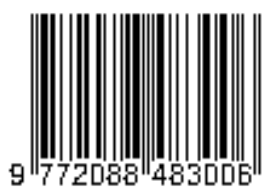GAMBARAN PENGETAHUAN IBU POST PARTUM TENTANG PERAWATAN PERINEUM DI RUANGAN POST NATAL CARE DI RSUD. LABUANG BAJI MAKASSAR TAHUN 2020
Abstract
Perineal rupture occurs in almost every first delivery and it is highly possible to occur in the next delivery. In the 2020, there were 2.7 million cases of perineal rupture injuries worldwide, with 26% of them followed by slow recovery, which takes more than 7 days after childbirth. Perineal rupture is also a significant issue in Asian. In Indonesia, one in five delivery ended with the death of mother because of perineal rupture which cause bleeding and infection. This research attempted to assess the knowledge of postpartum mothers regarding perineal care in the Post Natal Care of Labuang Baji Hospital, Makassar. Descriptive observational employed in carrying out the research. 30 women who were undergoing postpartum treatment were used as population for this research, where sampling technique used was total sampling. Data collected through through questionnaires. The research revealed that out of 30 respondents studied, 5 (16.7%) have good knowledge, 20 (66.7%) have enough (fair) knowledge, and 5 (16.7%) have poor knowledge. As a conclusion, the majority of postpartum mothers in the Post Natal Care ward of RSUD Labuang Baji Makassar have fair knowledge. The research recommend that the medical staffs-specially those who are working at Post Natal Care-to continuously provide education to postpartum mothers about proper perineal care
References
[2] Ariyanti, S. 2010. Perawatan Ibu bersalin. Yogyakarta: Pustaka Rihama
[3] Donsu, J. D. (2017). Metodologi Penelitian Keperawatan. Pustaka baru press.
[4] Festy, P., Wulandari, Y., & Syawaliyah, M. (2020). The Relationship of Nutritional Status and Perineal Wound Healing Among Post-Partum Women. Proceedings of the 4th International Conference on Sustainable Innovation 2020–Health Science and Nursing (ICoSIHSN 2020), 33(4), 500–503. https://doi.org/https://dx.doi.org/10.2991/ahsr.k.210115.098
[5] Hayati, F. (2020) ‘Personal Hygiene pada Masa Nifas’, Jurnal Abdimas Kesehatan (JAK), 2(1), p. 4. doi: 10.36565/jak.v2i1.62.
[6] Hidayat, A. 2004. Kebutuhan Dasar Manusia. Jakarta: Salemba.
[7] Istiarti. 2012. Menanti Buah Hati. Media Persindo. Yogyakarta.
[8] Kemenkes RI (2020) PROFIL KESEHATAN INDONESIA TAHUN 2019. Kementeria, Journal of Chemical Information and Modeling. Kementeria. Indonesia. Kementerian Kesehatan RI. Sekretariat Jenderal Profil Kesehatan Indonesia Tahun 2019.-Jakarta: Kementerian Kesehatan RI. 2020.
[9] Kemenkes RI. (2020). Pedoman Pelayanan Antenatal, Persalinan, Nifas dan Bayi Baru Lahir di Era Adaptasi Kebiasaan Baru. Kemenkes RI.
[10] Moya J. (2011). Manajemen Luka. Jakarta: EGC
[11] Mubarak, D. (2015). Buku Ajar Ilmu Keperawatan Dasar. Salemba Medika.
[12] Notoatmodjo, 2010. Metodologi Penelitian Kesehatan. Jakarta: Rineka Cipta.
[13] Notoatmodjo, S. (2012). Metode Penelitian Kesehatan. PT. Rineka Cipta.
[14] Nursalam. (2016). Metodologi Penelitian Ilmu Keperawatan. Jakarta: Selemba Medika. Salemba Medika.
[15] Pitriani, R. and Afni, R. (2019) ‘Pencegahan Infeksi Perineum Dengan Perawatan Luka’, Jurnal Pengabdian Masyarakat Multidisiplin, 2(3), pp. 221–226.
[16] Rohmin, A., Octariani, B. and Jania, M. (2019). ‘Faktor Risiko yang Mempengaruhi Kejadian Infeksi Postpartum’, Jurnal Kesehatan, VIII (3), pp. 449–454.
[17] Sampara, N., Sikki, S. and Aspar, R. (2020). ‘Pengaruh mengkonsumsi ikan gabus terhadap penyembuhan luka perineum pada ibu nifas 1’. Fakultas Keperawatan & Kebidanan, Universitas Megarezky, pp. 138–146.
[18] Sukarni, I dan Wahyu, P. (2013). Buku Ajar Keperawatan Maternitas, Yogyakarta: Nuha Medika.
[19] Suriasumantri dalam Nurroh. (2017). Konsep Pengetahuan. Salemba Medika.
[20] Susilawati, S., Patimah, M. and Imaniar, M. S. (2020) ‘Determinan Lama Penyembuhan Luka Perineum pada Ibu Nifas Determinants of Perineal Wound Healing Period in Postpartum Mothers’, 7(3), pp. 132–136.
[21] Termini, E. et al. (2020) ‘Pengetahuan Dan Sikap Ibu Nifas Tentang Perawatan Luka Perineum’, Jurnal Kesmas Asclepius, 21(1), pp. 1–9. doi: https://doi.org/10.31539/jka.v2i1.592.
[22] Wiknjosastro, Hanifa. (2010). Ilmu Kebidanan. Edisi Ketiga Cetakan Kelima. Jakarta: Yayasan Bina Pustaka Sarwono Prawirohardjo.
[23] Yuliana. (2017). Faktor-Faktor Yang Mempengaruhi Tingkat Pengetahuan. Salemba Medika.











